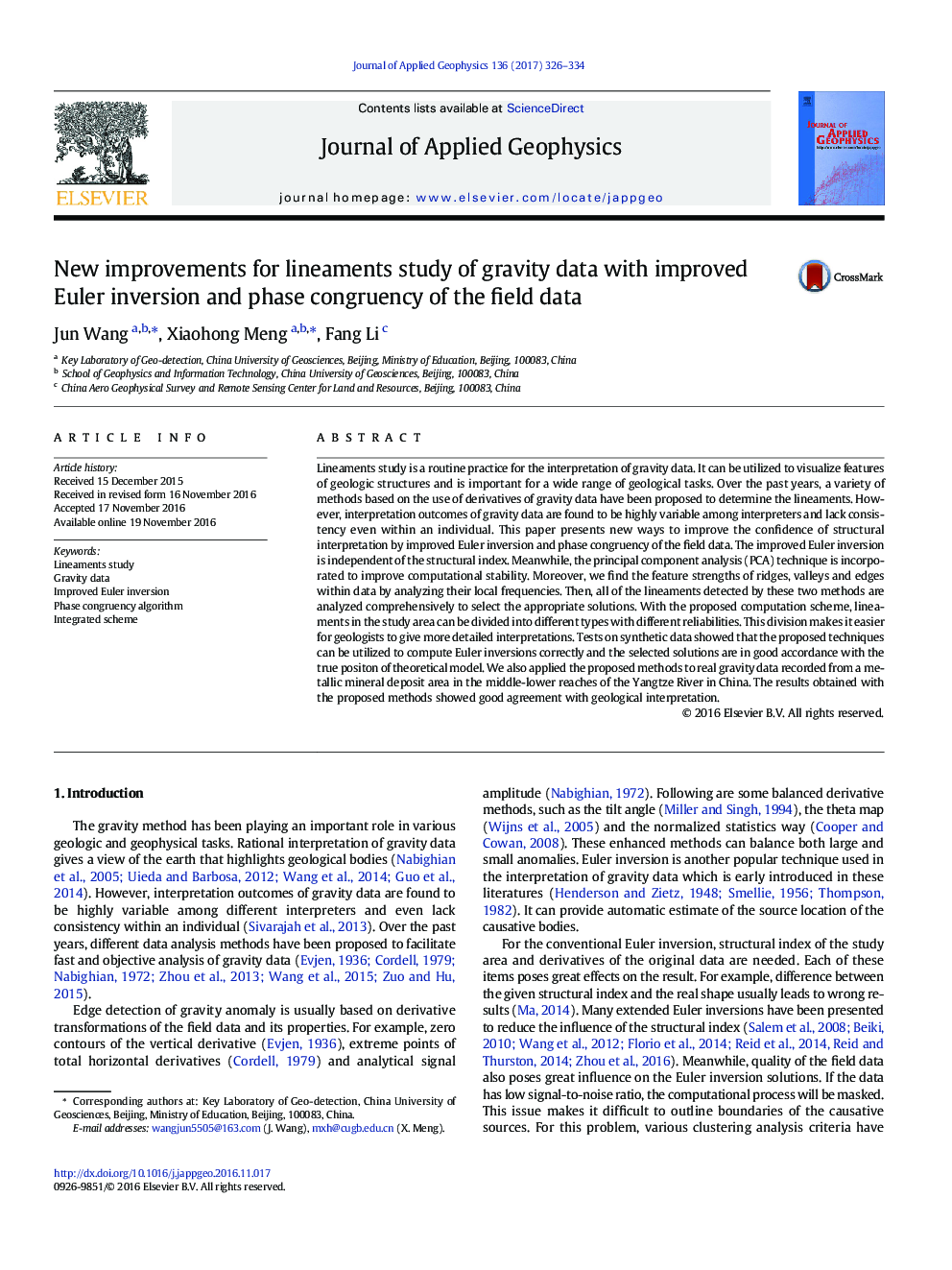| Article ID | Journal | Published Year | Pages | File Type |
|---|---|---|---|---|
| 8915599 | Journal of Applied Geophysics | 2017 | 9 Pages |
Abstract
Lineaments study is a routine practice for the interpretation of gravity data. It can be utilized to visualize features of geologic structures and is important for a wide range of geological tasks. Over the past years, a variety of methods based on the use of derivatives of gravity data have been proposed to determine the lineaments. However, interpretation outcomes of gravity data are found to be highly variable among interpreters and lack consistency even within an individual. This paper presents new ways to improve the confidence of structural interpretation by improved Euler inversion and phase congruency of the field data. The improved Euler inversion is independent of the structural index. Meanwhile, the principal component analysis (PCA) technique is incorporated to improve computational stability. Moreover, we find the feature strengths of ridges, valleys and edges within data by analyzing their local frequencies. Then, all of the lineaments detected by these two methods are analyzed comprehensively to select the appropriate solutions. With the proposed computation scheme, lineaments in the study area can be divided into different types with different reliabilities. This division makes it easier for geologists to give more detailed interpretations. Tests on synthetic data showed that the proposed techniques can be utilized to compute Euler inversions correctly and the selected solutions are in good accordance with the true positon of theoretical model. We also applied the proposed methods to real gravity data recorded from a metallic mineral deposit area in the middle-lower reaches of the Yangtze River in China. The results obtained with the proposed methods showed good agreement with geological interpretation.
Keywords
Related Topics
Physical Sciences and Engineering
Earth and Planetary Sciences
Geophysics
Authors
Jun Wang, Xiaohong Meng, Fang Li,
